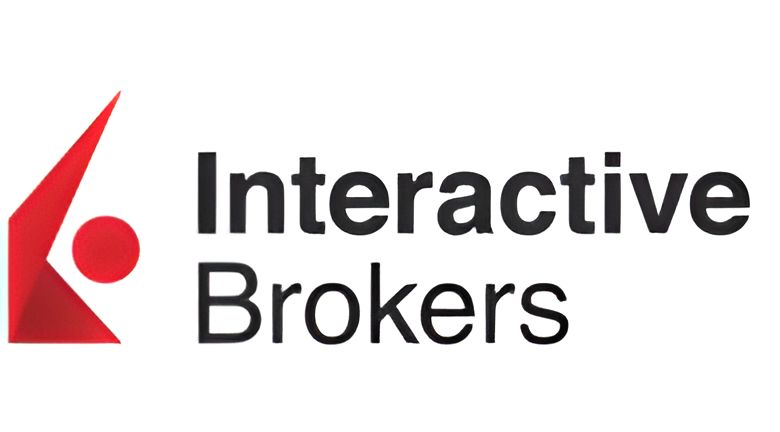
- Trade stocks, options, ETFs, mutual funds, alternative asset funds
- $0 commission on stocks, ETFs and options with no options contract fees
- Get up to $1,000 in stock when you open and fund a new account within 30 days
- Access to a financial planner
Day trading is a fast-paced, highly risky trading strategy that some traders use to try to lock in quick profits. But it can also result in significant losses.
If you’re simply curious about day trading or are considering trying your hand at it, here’s what day trading is and how you can get started.
Day trading is when a trader buys and sells the same securities within a single trading day, ending the day with no open positions. This is the opposite of investing, which is typically a long-term strategy. Day trading, popular with stocks and forex markets, can at times be lucrative, though it’s highly risky. Since many day traders use margin — borrowed money — they can potentially lose large amounts if they buy or sell at inopportune times.
Day traders try to capitalize on short-term market movements, and this can require trading large amounts of money to see any sizeable gains. Day traders often utilize technical analysis, a strategy that looks at the past performance of a security, to predict how it will perform in the future and may not pay much attention to the company’s business fundamentals.
Anyone who executes four or more day trades within five business days is designated a pattern day trader. Pattern day traders must maintain at least $25,000 in equity in their margin account on any day that they day trade or their day trading access will be restricted.(1)
Similar to any form of trading, day trading comes with unique risks and rewards. Here are a few to consider before starting.
Anyone can day trade. But to day trade successfully, you need to practice and properly manage risk.
Here are a few steps you can take to begin today.



Paid non-client promotion. Finder does not invest money with providers on this page. If a brand is a referral partner, we're paid when you click or tap through to, open an account with or provide your contact information to the provider. Partnerships are not a recommendation for you to invest with any one company. Learn more about how we make money.
Finder is not an advisor or brokerage service. Information on this page is for educational purposes only and not a recommendation to invest with any one company, trade specific stocks or fund specific investments. All editorial opinions are our own.
Day traders can use many strategies to take advantage of short-term market movements. Here are a few.
Momentum trading involves purchasing securities already showing an upward or downward market trend. This is due to the belief that stocks that have performed well or poorly will continue to do so.
Scalping is a trading strategy in which day traders aim to make smaller profits using frequent trades rather than larger profits with each trade.
This strategy involves buying or selling an asset when the security’s price breaks out of its trading range. This is usually in the beginning stages of a trend.
A pullback trading strategy is when day traders try to take advantage of a small reversal within a stock’s larger upward trend. They will purchase the security at this temporary lower price as an entry point and then sell the security when it rises in price and continues its larger trend.
The trade the news strategy involves looking at news events or global releases to decide what positions to take on securities. These can include pre-scheduled events or breaking news.

"The biggest difference between swing trading and day trading is the investment time frame. Swing trading is a trading strategy with an investment time frame of at least more than one day but typically no longer than a few weeks or a couple of months. Day traders buy and sell securities in a single trading session and don’t hold their positions overnight."
Day trading can be extremely risky, so you should consider ways to reduce risk and potentially cut down on losses.
Outside these practices, day traders can also reduce risk using the 1% rule — a twist on the popular “core-and-explore” strategy.
Christopher Liew, Chartered Financial Analyst (CFA), tells Finder, “Day traders can employ a common risk-management strategy called the 1% rule wherein traders don’t invest beyond 1% of their entire trading account in a single trade to manage possible losses.”
The 1% rule isn’t unlike the core-and-explore strategy — a strategy that allocates a majority of portfolio funds to low-cost diversified funds and leaves the rest for higher-risk, potentially higher-reward investments like growth stocks or even day trades. Core and explore might reserve 10% for riskier trades instead of 1% — but your number depends on the amount of risk you can afford to take.
Michael Shea, certified financial planner (CFP) and IRS enrolled agent, offers a similar approach:
“If you want to day trade, set aside an amount of money you’re 100% okay with losing. Make sure your retirement portfolio and savings are taken care of first, and if you have money left over to gamble on day trading, then have at it.”
The pattern day trading rule applies to day traders who execute at least four day trades within five business days. The rule was established by the Financial Industry Regulatory Authority (FINRA), is governed by the US Securities and Exchange Commission (SEC) and applies to all US brokerages. Pattern day trading isn’t illegal — but the pattern day trading rule limits who can execute day trades and when.
Your broker may deem you a pattern day trader if your day trading activity accounts for more than 6% of your total trading activity in five days. At this point, you’re required to bring your account balance above $25,000 to continue trading.
If you’ve been marked as a pattern day trader and fail to maintain a minimum account balance of $25,000, you won’t be able to day trade.
If you’d like to day trade and don’t have the means to bring your account balance above $25,000, you have a few options:
Some brokers let you day trade in a cash account — but only using settled funds. Cash accounts must use settled funds to cover trades to avoid freeriding, which is the act of buying and selling securities from a cash account without having the capital to cover the trade. Stock and exchange-traded fund (ETF) transactions take three days to settle, while mutual funds and options settle in one day.
Freeriding is illegal and prohibited by the SEC. Traders who engage in freeriding will have their accounts suspended for 90 days(5). The freeriding rule makes it very difficult to day trade using a cash account.
Margin trading is trading with borrowed money. When you trade on margin, you borrow funds from your broker to execute a trade. You’ll be asked to pay back what you owe with interest, and your account serves as collateral for the loan.
So long as the trade moves in your favor, trading on margin can be lucrative: You increase your buying power by borrowing funds, executing a profitable trade, paying back what you owe and pocketing the profit.
The problem with margin trading is that the potential to compound the results of a trade swings both ways: you may increase your profit — but you may also multiply your losses. Stop-loss orders may help cushion the impact, but margin trading remains an inherently risky strategy best reserved for those with extensive trading experience.
The right broker can make or break your day trading experience. Here’s what to look for in a broker:
Day trading is ill-suited to beginners. If you’re new to investing, you may be better off with a more beginner-friendly investing strategy.
This strategy involves purchasing stocks and — you guessed it — holding them. Sometimes for years. Buy-and-hold investors aim to weather market volatility by holding onto their stocks regardless of how the market moves.
The rationale behind this long-term strategy is that even if the market faces a downturn, it will eventually recover. For buy-and-hold investors, long-term gains are more appealing than trying to take advantage of small fluctuations in the market.
You could invest in index funds that track the S&P 500 and other indices. These funds aim to reflect the return of their respective indices rather than take the inherently riskier approach of beating the market.
In fact, the average annualized total return of the S&P 500 index over the past 25 years is 9%.(6) The S&P 500 index is composed of the biggest companies in America by market capitalization and is often seen as a reliable indicator of the overall market’s shape.
A robo-advisor is a digital investment service designed to pick and manage your investments for you. It’s a practical service for those new to investing, as you don’t need to actively monitor your portfolio: The robo-advisor does it all for you.
Many robo-advisors recommend diversified portfolios based on your unique investment goals. Once you fund your account, it selects your investments and automatically rebalances your portfolio if anything strays too far from your goals.
To day trade, you’ll need a brokerage account. Compare your options by platform features, fees and research tools to find the broker best suited to your investment goals.
The Finder Score crunches 147 key metrics we collected directly from 18+ brokers and assessed each provider’s performance based on nine different categories, weighing each metric based on the expertise and insights of Finder’s investment experts. We then scored and ranked each provider to determine the best brokerage accounts.
We update our best picks as products change, disappear or emerge in the market. We also regularly review and revise our selections to ensure our best provider lists reflect the most competitive available.
Day trading isn’t for everyone. It’s potentially profitable, but even with a solid strategy, a reliable broker and the right tech, the risk of losing money is high. Day traders must be prepared to lose capital, especially when trading on a margin.
The right broker can play a pivotal role in your success as an investor. Explore your platform options among multiple providers to find the best account for your needs.
SoFi, Robinhood, Tastytrade, Webull, Interactive Brokers, E*TRADE, eToro and others top our list for the best options trading platforms.
See our picks for the best brokers for trading S&P 500 stocks, ETFs, options and futures.
Our picks of the best brokerage accounts for index funds for beginners, teens, proprietary funds and more.
These are the stocks to buy when you don’t have much to spend.
Cash sweep accounts let you earn interest on your uninvested cash. Learn how they work and how to choose the best one here.
eToro is a robust trading platform with an easy-to-use interface and no commissions on stocks and ETFs.
Check out our picks of the best trading apps for beginners, options traders, hands-off investors and more.
Thinking of switching from Moomoo? Here are 5 apps like Moomoo that offer valuable benefits
See our picks of the best brokerage accounts, including Fidelity, SoFi, Charles Schwab, Public, Robinhood and E*TRADE .
Webull is a broker with zero-commission trading and a suite of tools to help you invest.